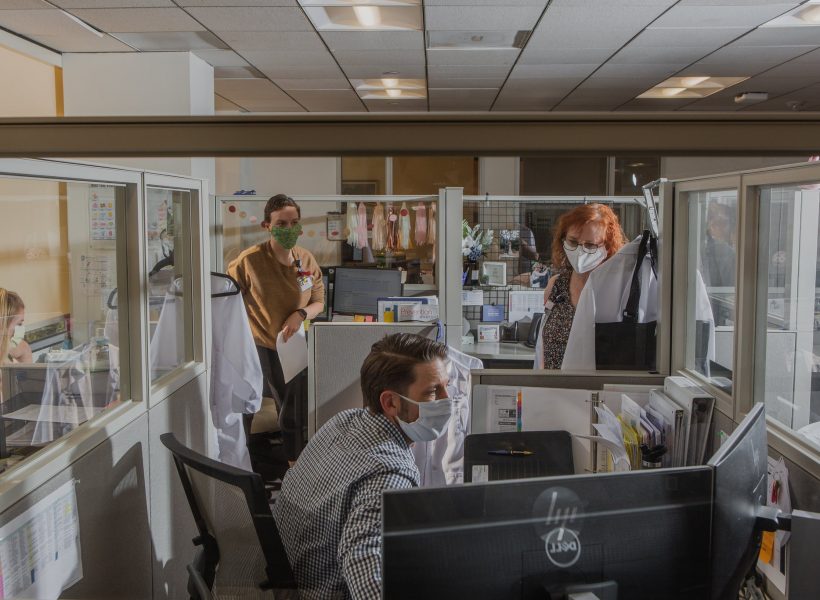This is the first time that organizations are actually rethinking work completely: how it is done, what the priorities are and how people are managed. Many industries that in normal circumstances may have taken a while longer are now urged to adopt new digital platforms, to embrace new working models for workers, to support skills development and training within the workplace and to adapt to rapid change.
Many organizations will have phased returns and say they will not require most people to come back until there is widespread testing and treatment. However, one thing is clear: Post pandemic workplace will look and feel very different than the offices many of us abandoned in March.
Everyone’s health and safety is top priority
Our workdays can start with self-administered COVID-19 symptom and temperature check. Once arrived at the office, we might have to go through a second health check. New and strict sanitizing guidelines will be in place and enforced. Our workplaces will get a makeover for the social distancing era. Access to doors, elevators and common areas will be strictly controlled. Formerly jammed open desks will sit half-empty. We may be sitting in cubicles with a top made of plexiglass sheets.
Work from home might be here to stay
The one change that is approaching faster than we could have imagined is remote work. We are in an era where we no longer need to tie work to time, but rather to productivity. At the end of the day, all that matters is getting the job done, not restricting employees to a rigid work schedule. Remote work also brings a new level of loyalty and transparency to the workplace. The pandemic has made employers move away from traditional thinking that productivity is contingent upon set hours within an office environment.
Tech budget will rise
Now, businesses are looking towards their long-term stability in the new normal. They are making software buying decisions to facilitate connectivity and continuity. They are providing employees with the tools necessary to make remote work effective. While loneliness and depression remain pain points for remote workers, the right technology can bring people together in new ways. Technology will also reduce the number of visits to any workplace limiting employees’ contact with new people every day.
At the end of the day, the focus on supporting employee well-being and how critical that is to business’s sustainability is evident. A business’s resilience has a lot to do with how it supports its people. It is crucial to understand this is a big change for everyone, so let us give ourselves the time to mourn the past and gradually adjust.
Take a minute to read an interesting article by Forbes.
